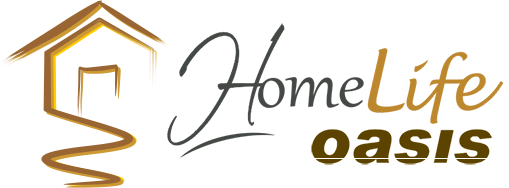In the realm of real estate, one of the most important and often complex aspects is the mortgage. Whether you’re buying your first home, investing in a rental property, or purchasing commercial real estate, understanding mortgages is essential to navigating the property market. A mortgage is more than just a loan—it is a pivotal financial tool that can unlock opportunities for wealth creation, but also carries significant responsibility. With so many types of mortgages available and varying terms, understanding the nuances of mortgage options can make a world of difference in the success of your real estate ventures.
This article will delve into everything you need to know about mortgages for real estate and property. From the basics of what a mortgage is to the different types of mortgages available, to tips on securing the best deal, this comprehensive guide aims to equip you with the knowledge necessary to make informed decisions in your real estate journey.
1. What is a Mortgage?
At its core, a mortgage is a type of loan specifically designed for purchasing real estate. The borrower agrees to repay the loan, typically in monthly installments, over a set period, usually 15 to 30 years. In return, the lender provides the funds necessary to buy the property. The property itself serves as collateral for the loan, meaning if the borrower defaults on their payments, the lender has the right to foreclose on the property and sell it to recoup the loan amount.
The structure of a mortgage loan can vary significantly depending on the type of loan, the lender, the borrower’s financial profile, and other factors. However, the core concept remains the same: the borrower borrows money to purchase property and agrees to repay the debt under specific terms.
2. Key Components of a Mortgage
Understanding the basic components of a mortgage is crucial to making smart decisions as a homebuyer or property investor. While the exact terms of a mortgage can differ, most mortgages share several key elements:
-
Principal: The principal is the original loan amount borrowed from the lender. It is the sum you initially borrowed to purchase the property. As you make payments on the loan, a portion of each payment goes toward reducing the principal balance.
-
Interest: The interest is the cost of borrowing the money. It is calculated as a percentage of the principal loan balance. Over time, the interest is typically paid in higher amounts at the start of the loan term, with the proportion gradually decreasing as the principal is paid down.
-
Term: The term of the mortgage refers to the length of time the borrower has to repay the loan. Typical mortgage terms are 15 or 30 years, but other options may be available depending on the lender and the type of loan.
-
Monthly Payments: These payments are the regular payments made to the lender. They typically cover a portion of the principal and interest, and in some cases, property taxes and insurance may be included in the monthly payment. These combined costs are often referred to as the “PITI” (Principal, Interest, Taxes, and Insurance).
-
Down Payment: The down payment is the initial payment made upfront by the borrower. This is typically a percentage of the property’s purchase price, with common down payment amounts ranging from 3% to 20%. A larger down payment often results in a smaller loan amount, which can reduce monthly payments and overall interest costs.
3. Types of Mortgages
Not all mortgages are created equal. Depending on your financial situation, the type of property you are purchasing, and your long-term goals, there are various mortgage products to choose from. Below are some of the most common types:
-
Fixed-Rate Mortgages: The most traditional and straightforward type of mortgage, a fixed-rate mortgage has an interest rate that remains the same for the entire term of the loan. This predictability makes fixed-rate mortgages attractive for those who prefer stability in their monthly payments.
-
Adjustable-Rate Mortgages (ARMs): An ARM starts with a lower interest rate compared to a fixed-rate mortgage, but the rate can change over time based on market conditions. After an initial fixed period (e.g., 5 or 7 years), the interest rate adjusts periodically, often once a year. While ARMs may offer lower initial payments, the risk is that interest rates could increase, making future payments higher.
-
FHA Loans: These loans are backed by the Federal Housing Administration and are designed to help first-time homebuyers and those with less-than-perfect credit. FHA loans typically require lower down payments (as low as 3.5%) and have more flexible credit score requirements. However, they may come with additional costs, such as mortgage insurance premiums.
-
VA Loans: Available to veterans, active-duty military members, and certain members of the National Guard or Reserves, VA loans are backed by the U.S. Department of Veterans Affairs. These loans typically offer competitive interest rates and require no down payment or mortgage insurance, making them an attractive option for eligible borrowers.
-
Jumbo Loans: These loans are for properties that exceed the conforming loan limits set by the Federal Housing Finance Agency (FHFA). Jumbo loans typically have higher interest rates and stricter qualification criteria due to the larger loan amounts involved.
-
Interest-Only Mortgages: An interest-only mortgage allows the borrower to pay only the interest on the loan for a set period (typically 5-10 years). After the interest-only period ends, the borrower begins paying both the interest and the principal, which can result in a significant increase in monthly payments. These mortgages can be risky, as they do not reduce the loan balance during the interest-only phase.
4. Qualifying for a Mortgage
Before lenders approve a mortgage, they assess the borrower’s financial health to determine their ability to repay the loan. The primary factors influencing mortgage approval include:
-
Credit Score: A high credit score indicates to lenders that the borrower is financially responsible and more likely to repay the loan. Generally, a credit score of 620 or higher is required for most conventional loans, though government-backed loans like FHA and VA loans may have more lenient requirements.
-
Debt-to-Income Ratio (DTI): The DTI ratio compares a borrower’s monthly debt payments to their gross monthly income. Lenders typically look for a DTI ratio of 36% or lower, though this can vary depending on the loan type.
-
Down Payment: A larger down payment reduces the lender’s risk and can help you secure a better interest rate. While many conventional loans require a 20% down payment, there are options available with lower down payments.
-
Employment History: Lenders prefer borrowers who have stable employment and a consistent income history. Having at least two years of steady employment can increase your chances of loan approval.
5. Mortgage Pre-Approval and Pre-Qualification
Before you begin house hunting, it’s essential to understand the difference between mortgage pre-qualification and pre-approval.
-
Pre-Qualification: This is a preliminary assessment of your financial situation based on the information you provide to the lender. It’s not as detailed as pre-approval, but it gives you a rough idea of how much you can borrow.
-
Pre-Approval: Pre-approval is a more formal process in which the lender reviews your financial documents, including your credit score, income, and employment history. If you’re pre-approved, it means you’ve passed the lender’s initial screening, and you are more likely to be approved for a mortgage.
6. The Mortgage Application Process
The mortgage application process can feel overwhelming, but understanding what to expect can help alleviate some of the stress. Here’s a breakdown of the typical steps involved:
-
Submit Your Application: The process starts by submitting your mortgage application and financial documents to the lender. These documents include proof of income, bank statements, tax returns, and information about your assets and liabilities.
-
Mortgage Processing: After submission, the lender will process your application, reviewing your financial history and verifying the information provided. During this stage, they may request additional documents or clarification.
-
Appraisal and Inspection: The lender will order an appraisal to determine the property’s value. You may also be required to have a home inspection to assess the condition of the property.
-
Approval and Closing: If everything checks out, the lender will issue a loan approval, and you will move toward closing. At closing, you’ll sign the necessary paperwork, pay closing costs, and finalize the mortgage agreement.
7. Mortgage Costs and Fees
In addition to the cost of the property itself, there are various fees associated with securing a mortgage. These can include:
-
Origination Fees: Fees charged by the lender for processing the loan application.
-
Closing Costs: These are the fees related to the transfer of ownership, such as title insurance, home inspections, and legal fees.
-
Private Mortgage Insurance (PMI): If your down payment is less than 20%, you may be required to pay PMI, which protects the lender in case of default.
Conclusion: Making the Right Mortgage Choice
Mortgages are a powerful tool that can make homeownership and real estate investment more accessible. However, it’s crucial to choose the right type of mortgage for your financial situation and long-term goals. By understanding the different types of mortgages, the qualifications required, and the costs associated with them, you can make an informed decision that sets you up for success. Whether you’re buying your first home or looking to expand your real estate portfolio, a well-considered mortgage strategy is the key to a prosperous future in real estate.

